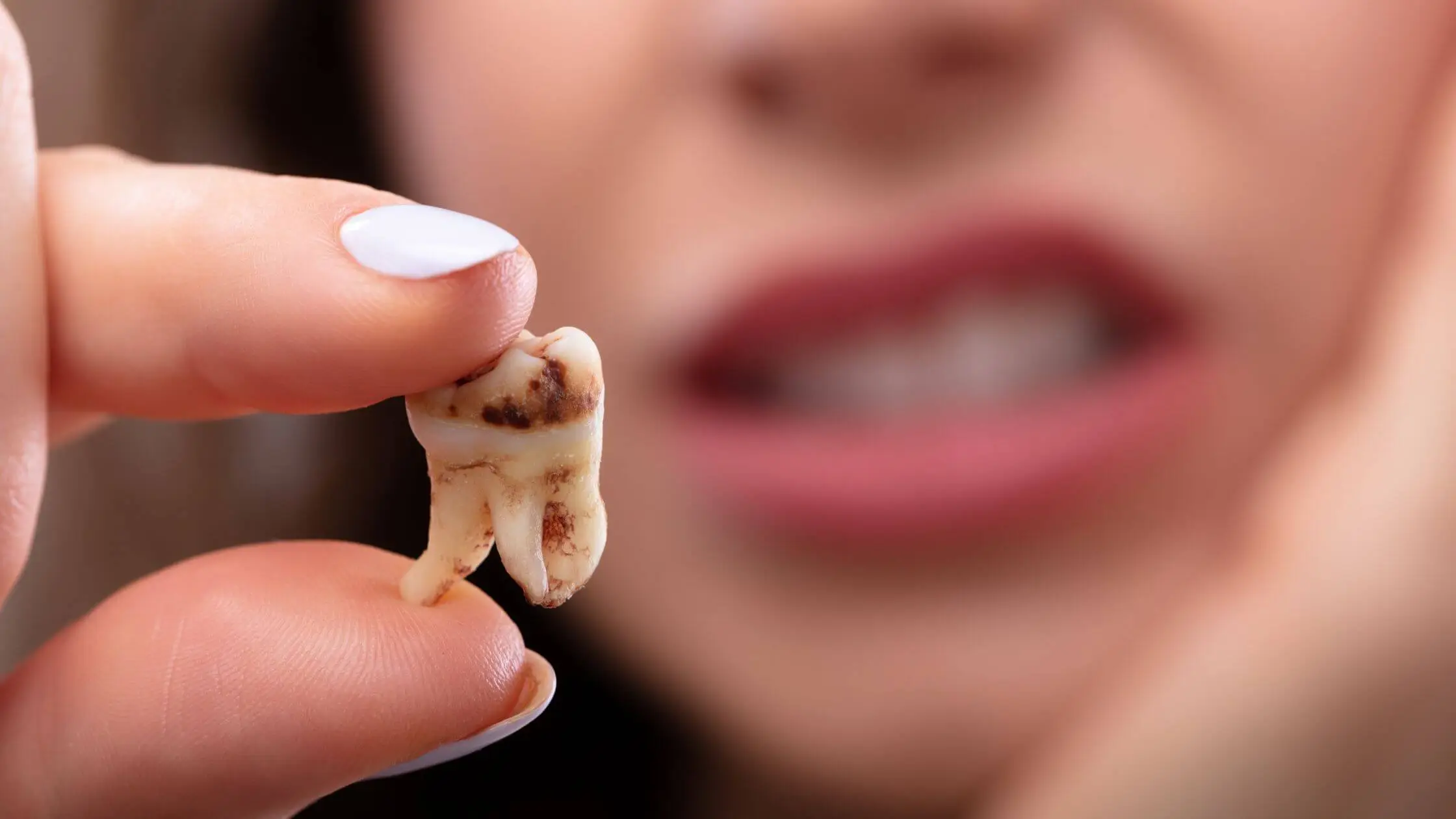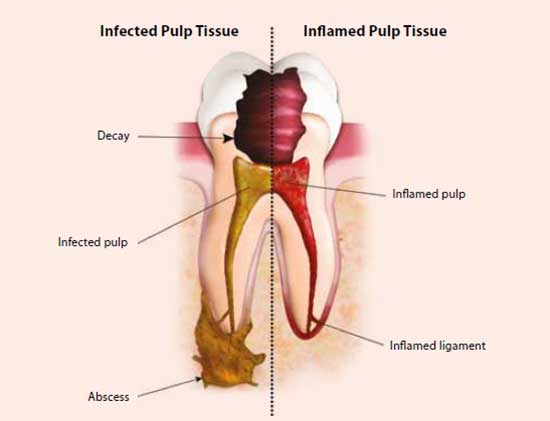Now Reading: Early stages of tooth decay
-
01
Early stages of tooth decay

Early stages of tooth decay
Cavities and How They Begin: Let’s Introduce You to the First Symptom of Cavities
Sey dental caries is one of the most widespread diseases that affect anyone. They only begin with a small form and are unnoticed until things worsen. But if you do not take care of it or visit a dentist for regular checkups and treatment, it may get worse and lead to teeth loss. This article will shed some light on some of the less severe forms of tooth decay, the causes of these forms, some of the symptoms that may be observed and ways of treating them to avoid total obliteration of the teeth.
Understanding Tooth Decay
Cavities are brown or black holes in the teeth, referred to scientifically as tooth decay, dental caries or cavities. This process is mainly driven by consuming the foods and beverages that the harmful bacteria feast on, such as sugary products. Occasionally, these bacteria solidify to form a spectacular layer called the plaque that forms on the tooth and gum. If not removed by regular brushing and flossing, it hardens and forms what is known as tartar and contributes to decay.
Stages of Tooth Decay
1. Initial Demineralization
Enamel demineralization, also referred to as the first stage of caries, is the first step where the enamel becomes demineralized and loses calcium and phosphate accordingly. This process is usually induced by the acids manufactured by bacteria that form a part of the plaque. Fluoride therapy may be given at this stage since you can now notice some white opaque areas on the outer layer of your teeth, commonly referred to as demineralized areas. While there is no total loss of the tooth, it is weakened and, at the same time, exposed to additional fractures.
2. Enamel Decay
If demineralization progresses, the enamel dissolves, forming a small cavity or hole on the tooth’s surface. These cavities may not be seen commonly but can be seen by the dentist during a dental checkup. In the third stage, the teeth are sensitive to heat, cold, sweet, or acidic foods, and this is so because the enamel is thinner and cannot afford enough protection.
3. Dentin Decay
Continuing the decay process, bacteria penetrate the hardest part of the tooth, the enamel and get into the softer layer – the dentin. Dentin is less hard and more porous than enamel and has a microscopic channel system that goes to the tooth’s pulp. If the rot starts affecting the dentin, you will likely feel more pain than when it only affects the enamel. The cavity enlarges, and the integrity of the building of the tooth is further assaulted.

4. Pulp Damage
In the deep stages of demineralization, the bacteria and the acids infiltrate the pulp chamber, which is the core of the teeth with nerve and blood supply. At this stage, one may develop severe pain since the infection leads to inflammation of the area. If the infection is not treated early enough, it will spread to the neighboring tissues, forming abscesses and may lead to tooth loss.
Causes of Tooth Decay
If you know how the decay starts, you can prevent any decay in your teeth. The primary factors contributing to tooth decay include: The primary factors contributing to tooth decay include:
1. Poor Oral Hygiene
Failure to brush and floss provides the pathogenic organisms with a surface on which to deposit calculus on teeth.
2. Dietary Habits
Consequently, consuming foods and beverages containing high amounts of sugar and acids favors the breeding of acid-producing dental plaques culpable for enamel decay.
3. Dry Mouth
It helps to neutralize acids and rinse food particles off as well. Dry mouth, which can be caused by an illness, medication or even old age, can increase the risk of cavities.
4. Frequent Snacking
Eating snacks repeatedly during the day keeps the supply of sugars satisfying for bacteria, thus leading to decay.
5. Lack of Fluoride
Fluoride acts as a mineralizing agent in the enamel, making it more resistant to demineralization and, hence, decay. No amounts of fluoride, when taken as paste used in the toothbrush or water consumed, also exposes the teeth to the risk of cavities.
Symptoms of Early Tooth Decay
When tooth decay starts, it is almost invisible, and people do not feel any pain or other symptoms. However, there are some signs to watch for: However, there are some signs to watch for:
1. White Spots
White spots on the teeth are more often the first manifestations of demineralization, as stated above. These areas ‘suggests’ that the enamel is soluble and progressively demineralized.
2. Tooth Sensitivity
Cold or hot drinks or foods, or sweet foods and beverages; the mild sensitivity to such foods and drinks may herald enamel erosion.
3. Bad Breath
Halitosis or bad taste in the mouth, which is a constant condition, may be caused by forming the film known as the plaque with bacteria.
4. Discomfort While Chewing
You may feel pain or pressure when putting pressure on it to bite and chew, especially if the decay has progressed to the dentin layer.
How to Treat Early Tooth Decay
The good thing is that cavities in the earlier stages may be arrested and reversed if the proper measures are employed. Here are some effective treatment options: Here are some effective treatment options:
1. Fluoride Treatments
Fluoride is a mineral added to the tooth enamel and aids in repairing tooth decay in its initial stages. In addition, your dentist may prescribe a fluoride treatment, including varnish, gel, or mouthwash, to rebuild the mineral content of the enamel sorely missing in your teeth. These treatments are most beneficial in the earliest decay stages before a lesion has developed into a cavity.
2. Dental Sealants
Dental sealants are plastic coatings used on the pits and grooves of posterior teeth to act as a barrier to the development of caries. They act as a shield, walling off the food particles and other germs that cause tooth decay. Sealants are most advisable for children and adolescents; however, people of any age can get sealants.
3. Improved Oral Hygiene
– Keeping an eye on oral hygiene and practicing for early signs of caries is the best way to prevent them. Some of the oral hygiene practices that should be followed include the use of fluoride-containing toothpaste to brush at least twice a day, regular flossing of the teeth to remove the plaque accrued in between the teeth and the use of an antibacterial mouthwash to eradicate the bacteria. A balanced and healthy diet is also important for teeth health, as well as for checkups and cleaning by the dentist.
4. Dietary Changes
To avoid having the enamel wear further, one should cut down on the amounts of foods and drinks that are sweet or acidic. However, it is advisable to consume a balanced diet with more fruits and vegetables, whole grains, and dairy products, which develop strong bones and healthy teeth. One can also choose to use sugar-free gum because it increases saliva flow in a person’s mouth, which aids in washing the acid away and the mineralization of the teeth.
5. Professional Dental Care
Regarding the syndrome, you need to go to your dentist for a detailed checkup, especially if you think you are beginning tooth decay. If you notice any of the symptoms of a cavity, or if you have a simple checkup with your dentist, they can immediately diagnose a cavity and suggest the correct course of treatment. Sometimes, a small decayed area may be filled to merely repair the tooth and cease further progression of the decay.
Conclusion
Prompt diagnosis and treatment of a cavity is essential in order to keep healthy teeth and avoid other dental issues. Studying the phase of caries development and using appropriate measures to prevent it is one of the ways to preserve your teeth for many years. Pay attention to it by not brushing and flossing your teeth, eating junk food and making a habit of going to the dentist for checkups and cleaning. By providing your teeth with proper care, you are able to prevent them from developing decays.





















